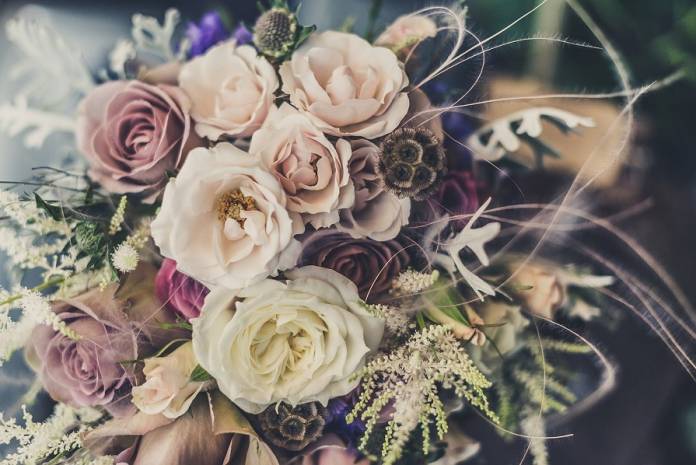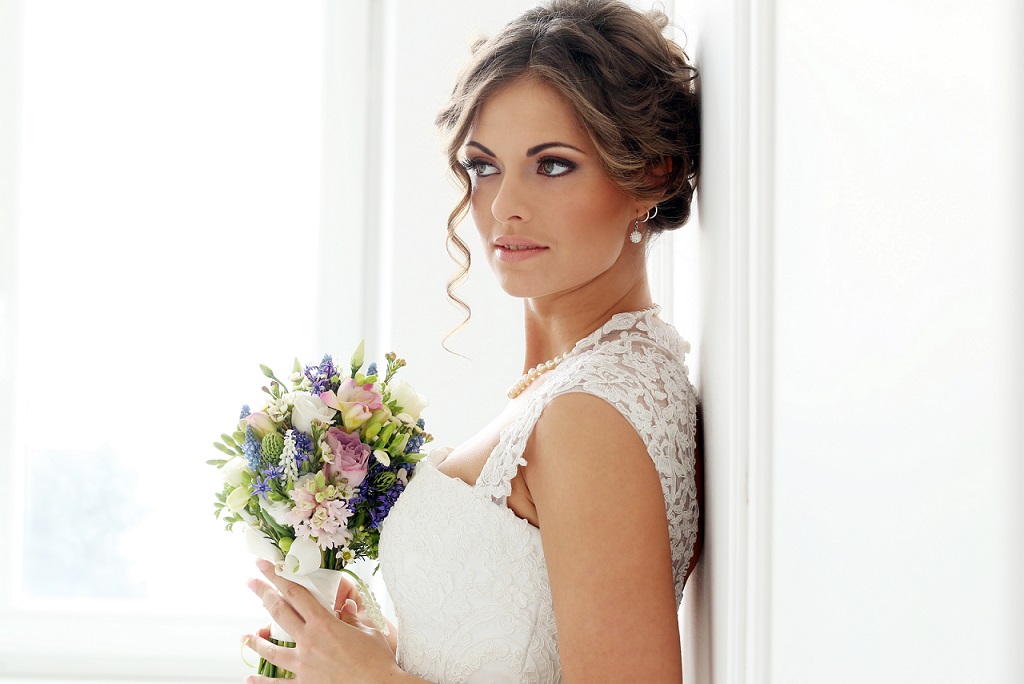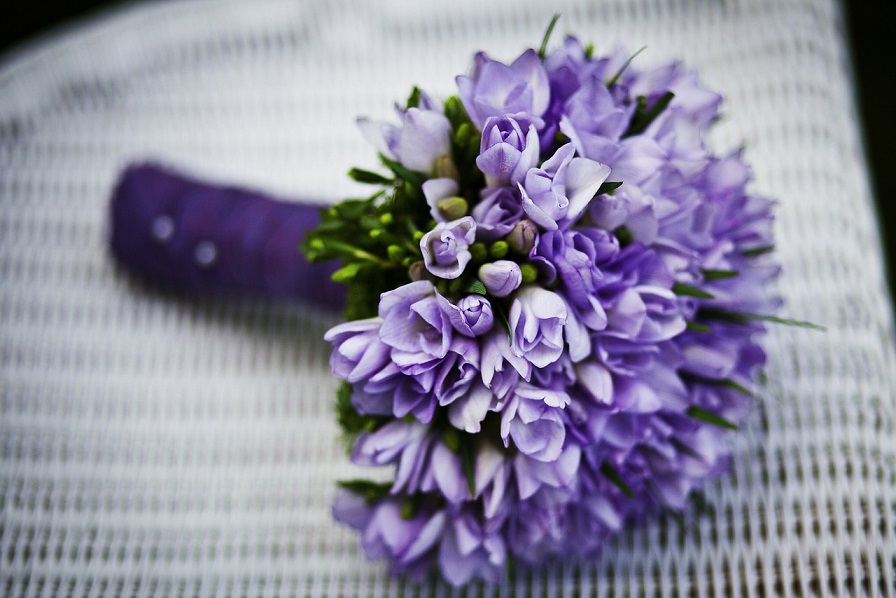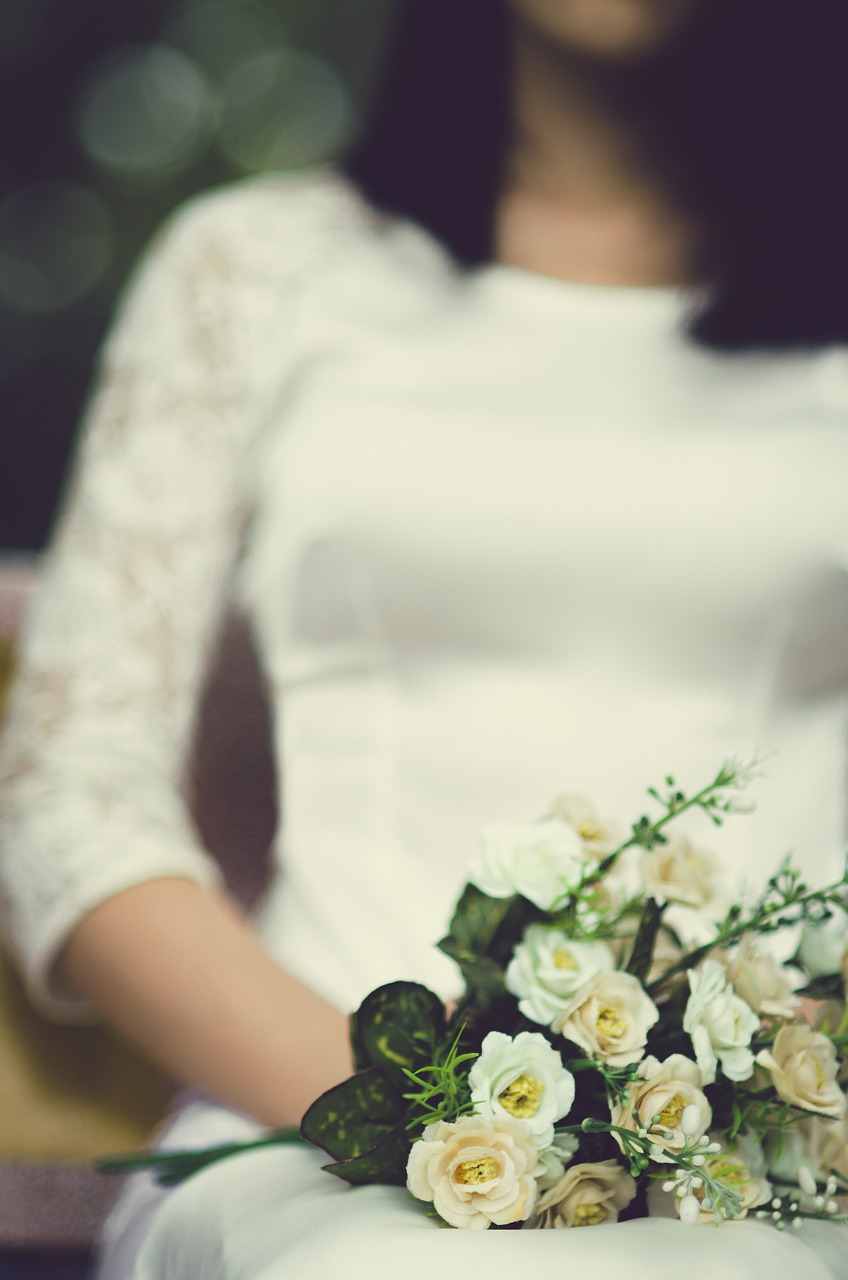Flowers are an integral part of a wedding. They add to the beauty, colour and style of the occasion. The bridal bouquet is usually deemed to be the most beautiful and important among the hundreds of flowers gracing the venue. Contrary to popular belief, the bouquet is not just a matter of selecting those that you find prettiest. There are many other elements that ought to be considered when choosing your bridal bouquet.
Your dress
As a rule of thumb, you should choose your wedding dress before choosing your bouquet. This is because the bouquet should accessorise the dress and not overpower it. The more detailed and intricate the dress, the simpler the bouquet should be. If your dress has lots of embellishments, your bouquet should be simple so as not to distract from the wow factor of your beautiful dress. A simple dress would look great with a more detailed bouquet.
The shape of your dress should also influence your decision. Round poises complement ball gown dresses whereas teardrops are suited to A-line bridal gowns. Mermaid and slim fitting gowns look great with contemporary bouquets such as poises and arm bouquets. The colour of the flowers you choose should complement your dress. An off-white dress for instance would look more elegant with peaches and muted pinks than with white flowers.
Your size and shape
The bouquet should complement your proportions. Small bouquets may look miniature when carried by statuesque brides whereas large bouquets may overwhelm petite brides. A scaled-down bridal bouquet will help accent a petite bride’s physique. A nosegay, posy or composite bouquet can work. Teardrop bouquet will also work well because they provide both length and line without overpowering your physique. Tall brides will be flattered by large round posies or trailing bouquets that draw the gaze downwards. Teardrops and larger cascade bouquets are ideal for full figured rides as they help them appear slimmer. Your bouquet should be smaller than your waist in order to accentuate your natural body shape.
Your colour scheme and theme
Flowers naturally enhance colour. The petals of your flowers should therefore align with your colour scheme. If you would like something more adventurous, you can clash colours as long as they are not distracting. Themes can also guide your choice of flowers. A formal, glamorous wedding will require lush flowers like aubergine calla lilies or bright crimson roses. Classical blooms and subdued colour palettes are suitable for traditional weddings. Casual weddings allow for more experimentation. You can use a wider range of colours and even non-traditional elements like herbs and berries.
Seasonality
While most brides don’t choose their wedding date around flower seasons, it actually is a factor worth considering. Out of season flowers can take you over your budget. Flowers in season are not only cheaper but also best-looking, with larger heads and vibrant colours. The scented varieties are much more fragrant when in season.
Stem and details
You can choose to have a natural hand-tied or wired bouquet. Florists can make linear or more intricate designs on wired bouquets. They are more expensive to make than the natural-stemmed bouquets because they take more time to be made. You can enhance your bouquet by having the stems covered. For an outdoor ceremony, handpicked freshness can be induced by tying the stems with a simple bow. The entire stems can also be tied using wide ribbons. Whether the ribbon matches the colours of the flowers or not, it should always accessorise them rather than overpower them.
Final thoughts
The bridal bouquet is an important part of your big day’s ensemble. It is therefore crucial for you to take time to find the perfect bouquet. A good florist will help you make the right decisions. He or she should be able to understand you and offer a style and taste that are compatible with yours. In short, the two of you should easily connect.

















